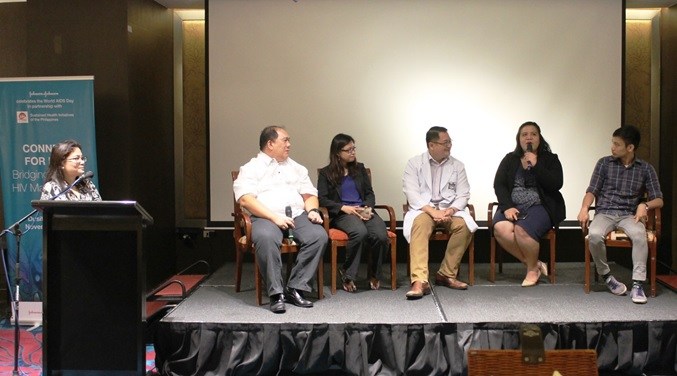MANILA, Philippines – The National Youth Commission (NYC) expressed concern yesterday over the rising number of young Filipinos testing positive for human immunodeficiency virus (HIV), which it described as a worsening “youth epidemic” in the country.
“The NYC is extremely alarmed by the unprecedented spike in HIV infection among our youth. HIV/AIDS is one of the most urgent concerns facing the Filipino youth today. Our young people are at risk and vulnerable,” chair Aiza Seguerra said.
“The HIV epidemic in our country has a new face and it is the face of a young person,” the NYC chief added.
Citing official statistics, the youth commission
said 62 percent of new HIV cases in the country this year was among young people between 15 and 24 years old.
“Out of the 29 Filipinos who get infected every day in the Philippines, more than half or 19 are 15 to 24 years old. Twenty-five out of the 29 are 15 to 30 years old,” said NYC commissioner Percival Cendaña.
The Department of Health (DOH) projects that more than 55,000 Filipinos will get infected with HIV this year.
According to Antoinette Evangelista, project officer at the DOH’s National AIDS/STI Prevention and Control Program, the agency’s Epidemiology Bureau made the projection based on diagnosed cases reported to the DOH and the trend of the disease in the country.
Fast and furious
“The epidemic is affecting young people at an unprecedented rate,” Cendaña said. “HIV incidence in the country is increasing at a ‘fast and furious’ rate. Even more fast and furious is the rate of infection among our youth.”
Evangelista said the “fast and furious rate” of HIV infections in the country began in 2008.
Seguerra called for immediate and comprehensive interventions to address the epidemic, calling on different stakeholders to help in empowering the youth with the right information to prevent the spread of the virus.
“Unprotected sex is the main driver of the epidemic. We have to enable the youth to make responsible decisions, (ranging) from abstaining from sex to using a condom,” Seguerra said.
Testing for minors
The NYC expressed support for a proposed legislation that would strengthen measures against HIV/AIDS in the country, including allowing minors to have themselves tested without parental consent.
“HIV is not a death sentence. Sexually active young people should get tested. The earlier they know their HIV status, the earlier they can seek care and treatment to improve quality of life,” Cendaña said.
But while they agree to allowing 15 to 17 year olds to avail themselves of HIV testing without parental support, the NYC still believes that those who test positive – especially the youth – should have the support that they can get from their family and friends.
“(But) if parental consent is a deterrent (for minors who wish to get tested), we must remove that,” he said.
He also underscored the need to remove the stigma against the disease, saying it was one of the reasons why the virus continued to spread as people were discouraged from getting tested due to fear of being discriminated against.
Sen. Risa Hontiveros filed Senate Bill 376, or the Philippine HIV and AIDS Policy Bill, to strengthen the country’s response to the spreading epidemic.
‘Connect for Life’
“We have to look for all of those infected… We encourage people to undergo testing,” Evangelista said during the launch of the “Connect for Life” program of the Philippine General Hospital, Janssen Pharmaceutical Companies of Johnson and Johnson and Sustained Health Initiatives of the Philippines (SHIP), a non-governmental organization.
Evangelista added those infected but are unaware of it might “unintentionally spread the infection through sexual contact and, in some cases, sharing of needles” among drug users.
Based on a surveillance report of the DOH, there were 3,112 new HIV/AIDS cases documented in July to October, bringing the total this year to 7,756.
The figure also raised to 38,114 the total number of cases since 1984.
Of the 3,112 cases, 333 are already full-blown AIDS when reported to the DOH. Eleven of the cases are less than 11 years old while 885 belong to the 15 to 24 age bracket and 1,637 are 25 to 34.
“The trend is increasing. In 2008, there was only one case per day. In 2010 there were four cases, nine cases in 2012 and 17 in 2014. This year, we have 26 HIV cases daily,” she said.
Evangelista added that since the country documented its first HIV case in 1984, cases were “quite stable – there was low and slow progression of the HIV epidemic” until 2008.
By Janvic Mateo and Sheila Crisostomo (The Philippine Star) | Updated November 30, 2016 – 12:00am
http://www.philstar.com/headlines/2016/11/30/1648910/hiv-philippines-now-youth-epidemic
Like this:
Like Loading...

